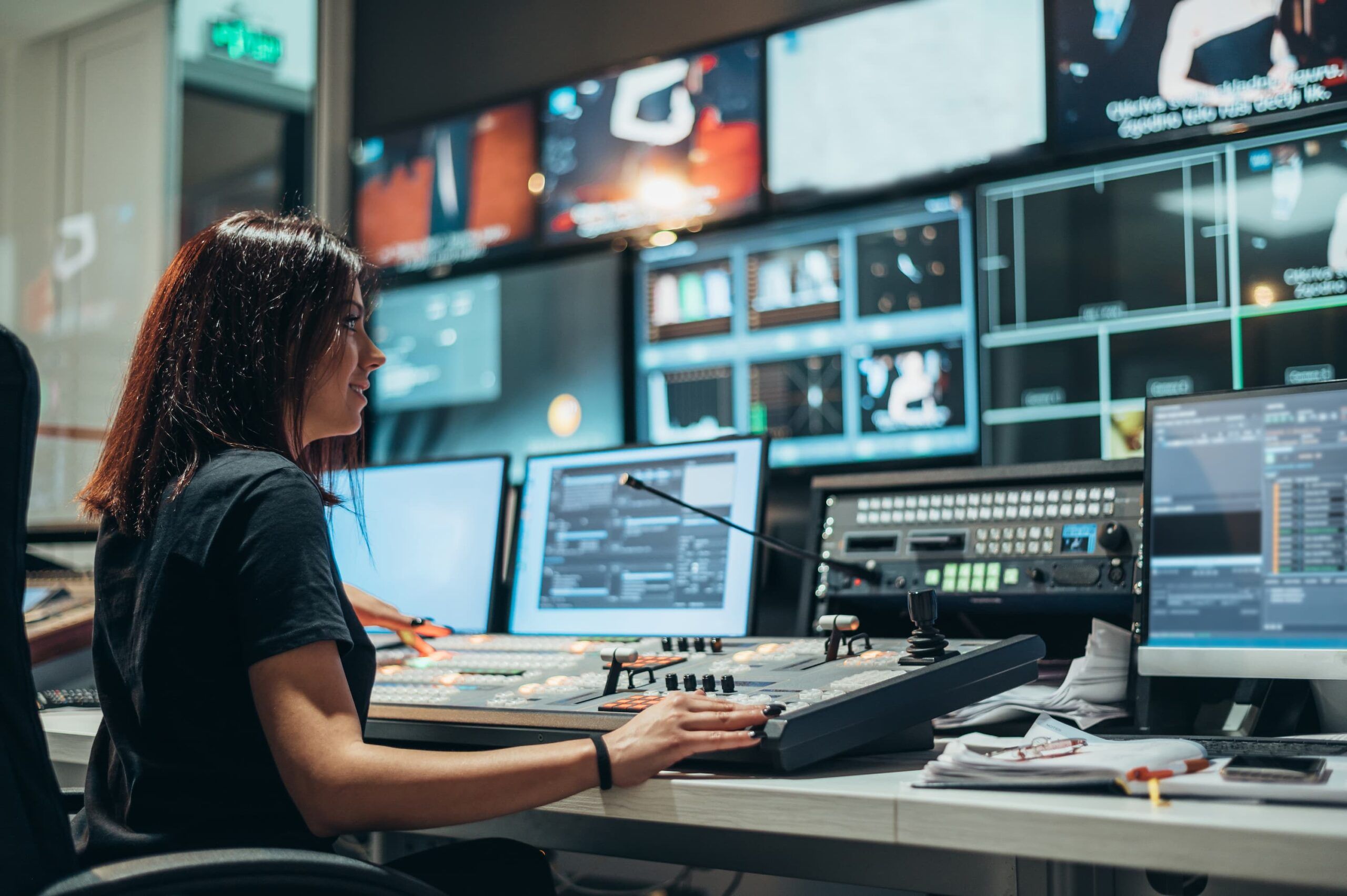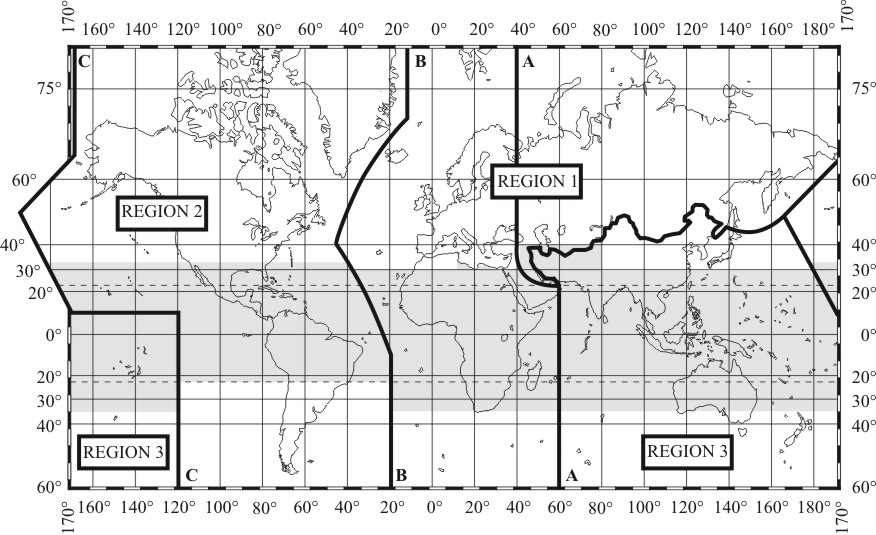
WRS-22: Tracking the latest broadcasting trends
by ITU News
In the age of streaming content via over-the-top (OTT) platforms, does traditional radio and television broadcasting still matter?
The answer is an unequivocal yes – especially during “difficult times and big events,” according to Ilham Ghazi, Head of the Broadcasting Division at the International Telecommunication Union (ITU).
At the biennial World Radiocommunication Seminar (WRS-22) held at ITU’s Geneva headquarters last month, Ghazi spoke about trends, regulatory aspects, spectrum issues, and broadcasting’s resilience in an increasingly digital world.
Many countries relied on their broadcasting services to keep education systems going, with TV and radio channels keeping an estimated 1.5 billion students learning during the COVID-19 pandemic, Ghazi said.
Broadcasting remains especially efficient for informing – as well as entertaining – large, dispersed audiences.
“The FIFA World Cup is another good example showing how we still love to gather and watch TV,” she added.
OTT streaming over the Internet offers another, digital-based way to reach viewers, without eliminating the value of broadcasting over the airwaves.
Supported by standards
Keeping broadcasting systems operating smoothly on a growing array of platforms relies on continually updated, consensus-based technical standardization with input from industry and policy makers around the world.
Digital broadcasting standards and recommendations developed by ITU study groups underpin many OTT streaming technologies.
New data compression techniques are “the hidden heroes” enabling digital broadcasting and streaming to flourish, because they allow more data to be transmitted over a given channel, Ghazi explained.
Take the versatile video coding Recommendation ITU-T H.266, for instance, which reduces the amount of data needed for high-quality video, unlocking an unprecedented range of new and existing broadcasting applications. This standard can deliver ultra-high-definition (UHD) content at the same bitrate as today’s commercially available high-definition (HD) video services.
The rise of digital broadcasting can bring healthy competition for other platforms, helping to keep the market fair and efficient.
Efficiency of spectrum use is the main concern for regulators, noted Ghazi, adding: “Transition switching from analogue to digital broadcasting provides the possibility to free part of a given band for other uses.”
For TV and radio operators and content providers, digital broadcasting reduces transmission costs and allows more services without spectrum constraints.
“A greater variety of programmes reception modes and services (including interactive ones), along with improved image and sound quality are just some of digital broadcasting’s major benefits for users.”
Switch to digital
Digital broadcasting started in the 1990s for both TV and radio. “Around 2000, we saw the first digital switchover of TV and an increase in digital radio transmissions,” Ghazi said.
“Today, the digital switchover for television is nearly complete, triggering changes in user behaviour,” she added.
In contrast, the switchover of radio to digital platforms is still in progress in many countries, especially in Africa, where ITU has supported regional-level plans to allocate additional frequency channels in VHF Band II to be used for analogue or digital radio.
Ongoing challenges
Despite the resilience of broadcasting as a basic medium, challenges remain in the provision of services, especially in terms of spectrum availability.
The expansion of radio – whether analogue or digital – is hampered by a lack of available frequencies and increasing congestion in highly sought-after bands, said Ghazi.
ITU’s upcoming World Radiocommunication Conference (WRC-23) will consider fixed, mobile and broadcasting issues, including for ultra-high frequency (UHF) television, with a view to reviewing the spectrum needs of existing services in the 470–960 megahertz (MHz) frequency band in ITU Region 1.

Still, free-to-air TV suffers from the continual emergence of new competition – whether from OTT streaming, Internet Protocol television (IPTV), or satellite services.
Constantly changing audience habits, along with the evolution and convergence of technologies, such as the integration of free-to-air receivers in mobile devices, pose considerable challenges to television broadcasters worldwide.
“Content providers with huge budgets to not only create but also distribute content are growing,” said Ghazi. “Going forward, regulators need to take major investments for digital broadcasting – whether already made, ongoing, or planned – into account.”
What lies ahead
Artificial intelligence (AI) holds great promise when applied to broadcasting, given its many potential use cases, said Ghazi.
For instance, AI can improve closed captioning or audio description services by using metadata and computer vision for better image recognition.
It can also enhance programme production by facilitating big data analysis, automatic translation, text-to-voice and voice-to-text conversation, and object tracking, Ghazi noted.
In advertising, AI can identify optimal ad placements in broadcast content. It can also form part of the content, as a humanoid news presenter, for example.
Broadcasters can make their transmissions more efficient with AI-powered network planning and system monitoring.
Another emerging technology that will likely gain prevalence in broadcasting is virtual and augmented reality, including 360-degree live video.
“Advanced sound systems to enhance programme production include headphones associated with metadata,” Ghazi added, calling this “a vital part of the AI/AV systems experience.”
This special ITU News blog series features content from the 30th World Radiocommunication Seminar, including a closer look at the latest trends in broadcasting, international mobile technologies, maritime communications, space and terrestrial services, and more.
The series will conclude a preview of the World Radiocommunication Conference (WRC-23), set to take place in Dubai from 20 November to 15 December 2023.
Image credit: Adobe Stock
